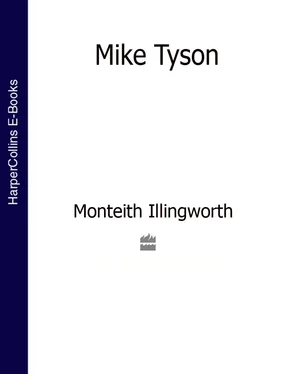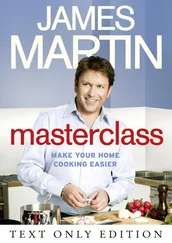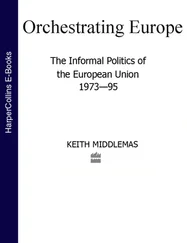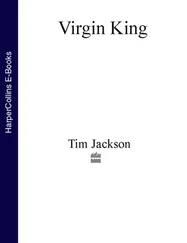He didn’t do that for the money but, as was usual with D’Amato, for the fulfillment of an idea. This one, however, got twisted around. The idea, he claimed, was to do everything for the benefit of the fighter. But D’Amato pursued that objective obsessively. He ended up using some of the same tactics as his enemies. The effort drove him into a state of paranoia, and in the end the fighter was not well served. Without his champion, and disgraced by his meddling in the promotion of Patterson’s fights, D’Amato was pushed into obscurity—until Mike Tyson came along and D’Amato was rediscovered, repackaged, and made sagelike to a new generation.
Even though the I.B.C. slowly crumbled, D’Amato continued during Patterson’s reign to see the enemy in every dark corner. Years later, he told people that someone once tried to push him in front of a subway train. In another story, Rocky Marciano supposedly knocked at his door. When D’Amato opened it, he found the boxer in the company of two mobsters. According to D’Amato, he spun the double-crosser Marciano around, put an ice pick to his throat, and said, “Get outta here or the champ dies.”
Perhaps that happened. Perhaps not. To the men who knew him well then, it seemed more likely that D’Amato couldn’t stop fighting an imaginary war. Fariello held this view. “It was all because of the I.B.C., he said. They were out to get him, hurt him. I never saw anything that justified those fears.”
D’Amato enjoyed food and drink on the town, but he feared that someone would spike his beer, so he stopped going out. He was afraid someone might drop drugs in his pocket, so he sewed the pockets of his jackets. When the phone rang, he never spoke first, choosing instead to listen until he could identify the caller. He kept a hatchet under his bed and an ice pick in his pocket. To anyone riding in an elevator with him, D’Amato, fearing that some I.B.C. hit man was at the controls and waiting with a gun, would say, “If it goes down to the basement, we’re dead.”
D’Amato went to great lengths to protect Patterson from these imaginary enemies. He assumed that any big-time New York promoter was I.B.C.-connected. D’Amato sought out inexperienced and easily controlled independents. Between July 1957 and June 1959, Patterson defended his title only three times. He fought in Seattle, Los Angeles, and Indianapolis. The opponents, all nearly unknowns, barely tested Patterson’s abilities. Pete Rademacher, the 1956 Olympic champion, had his first pro fight with Patterson; not surprisingly, he lost by a knockout in the sixth. A year later, Patterson fought Roy Harris, a schoolteacher and club fighter from Cut and Shoot, Texas. A year after that, he disposed of a British journeyman named Brian London.
D’Amato’s paranoia began to destroy the proverbial Golden Goose. The long layoffs and easy matchups dulled Patterson’s unique boxing skills. In the Harris and London fights it took Patterson thirteen and eleven rounds, respectively, to do the job. “I couldn’t put anything together,” Patterson told Liebling of his performance against Harris. “I said to Cus he’s got to get me more fights.”
The London promotion showcased D’Amato’s obsession with total control. When London arrived to complete his training for the fight, he went to D’Amato’s gym, where he used a hand-picked D’Amato trainer and Patterson’s own sparring partners. D’Amato appointed a U.S. “representative” to co-manage London for a cut of his purse. He barred the press from interviewing London. Those were all tactics used by the I.B.C.
D’Amato eventually fired the first inexperienced promoter. The second, Bill Rosensohn, had only one fight to his credit, the Harris match. Rosensohn was young, eager to please, and, so D’Amato thought, easily controlled. He also worked for TelePrompter Corporation, recently formed to exploit the relatively new concept of closed-circuit theater television.
Traditionally, promoters made money on the radio broadcast and ticket sales, less fighters’ purses and expenses. With the advent of television in the 1950s—at one point fights could be seen three nights a week on the small screen—advertiser revenue expanded the pie. Managers fought bitterly with the I.B.C. and its promoters at Madison Square Garden to get a share of the television revenues. They didn’t get very far.
Closed-circuit posed a new opportunity, and D’Amato, as manager of the heavyweight champion, knew he could exploit it. Now he, and not the I.B.C., controlled the promoter. D’Amato dictated the split of the closed-circuit revenues.
Rosensohn, a thirty-eight-year-old, ambitious, heavy-eyed, slimfaced, Princeton-educated dandy, readily accepted D’Amato’s terms. In the Harris fight, D’Amato brought in a friend, Charlie Black, to profit from the promotion. D’Amato and Black were boyhood friends, and despite Black’s convictions for bookmaking, plus his underworld ties, Cus kept up the friendship. Black, after all, was the kind of man who could come in handy. D’Amato ordered Rosensohn to pay Black 50 percent of the net profits. He paid, but profits were low, and Rosensohn made only a few thousand dollars. D’Amato, in another classic I.B.C. move, also put a lock on Harris should he beat Patterson. He required Harris to sign a managerial contract with Black.
Rosensohn started to get hungry. He tried to initiate his own deal and signed Ingemar Johansson, a capable Swedish heavyweight, to a forty-day option for $10,000. During that time, Rosensohn had to get him a match with Patterson or lose the money. Rosensohn felt he had a tailor-made D’Amato opponent: non-I.B.C., not much of a threat, easily controlled.
D’Amato stonewalled. Perhaps he felt that Johansson, known for having a thunderous right hand, would be no pushover. But it’s more likely that D’Amato delayed as a pressuring tactic to keep Rosensohn in line.
Rosensohn gambled heavily and usually lost more than he won. He needed money to finance the promotion, plus some way to make D’Amato cooperate. Rosensohn went to his bookmaker, Gilbert Beckley, for help. Beckley had once introduced him to an East Harlem-based mobster named Anthony (“Fat Tony”) Salerno. Rosensohn asked Salerno to finance the promotion in exchange for a share of the profits, adding that there was one problem: he had already promised Charlie Black 50 percent of the net. Not to worry, said Salerno. He knew Black; a deal would be made. Rosensohn ended up with $25,000 for the promotion and a $10,000 loan for himself. He gave Salerno and Black each one-third ownership in his company, Rosensohn Enterprises.
Not long after that, D’Amato delivered Patterson. But he had a new demand. D’Amato wanted 100 percent of all ancillary rights (closed-circuit, radio, and movie) plus half the net from ticket sales. Rosensohn felt he’d been set up in an elaborate plan to trade off the promoter’s rights so that D’Amato, Black, Salerno, and Patterson could profit. D’Amato threw in one more zinger. When Johansson arrived, D’Amato assigned another friend, Harry Davidow, as “representative” for a 10 percent purse cut.
The only piece of the pie D’Amato left intact was the option on Johansson’s next fight if he should win. Unlike in the deal with Harris, he gave that to Rosensohn. It proved a big mistake.
It drizzled a warm, wet rain on the night of the fight, June 26, 1959. Ticket sales were dismal. Patterson, wrote Liebling, “came out to prove himself.” He shot jabs out at Johansson, who merely retreated. Johansson looked patient and held his mysterious right hand—dubbed the “Hammer of Thor” by the press—in reserve. In the third it became clear that for Patterson almost three years of easy opponents and infrequent bouts had taken their toll. Johansson hit him with a straight right that virtually ended the fight. Patterson got up, stunned. Johansson dropped him seven times before the referee called it quits.
Читать дальше










![Brian Thompson - A Monkey Among Crocodiles - The Life, Loves and Lawsuits of Mrs Georgina Weldon – a disastrous Victorian [Text only]](/books/704922/brian-thompson-a-monkey-among-crocodiles-the-life-thumb.webp)

